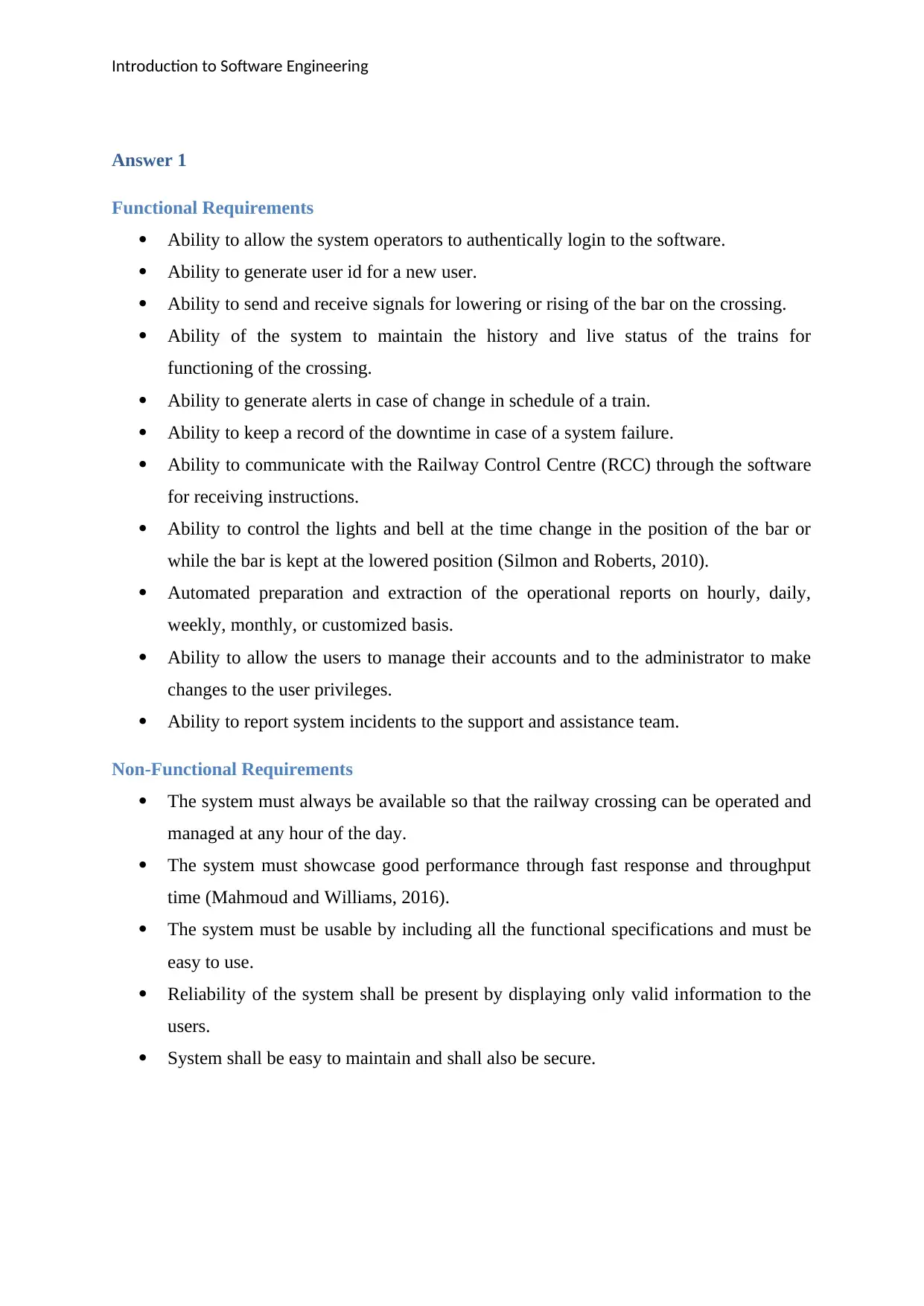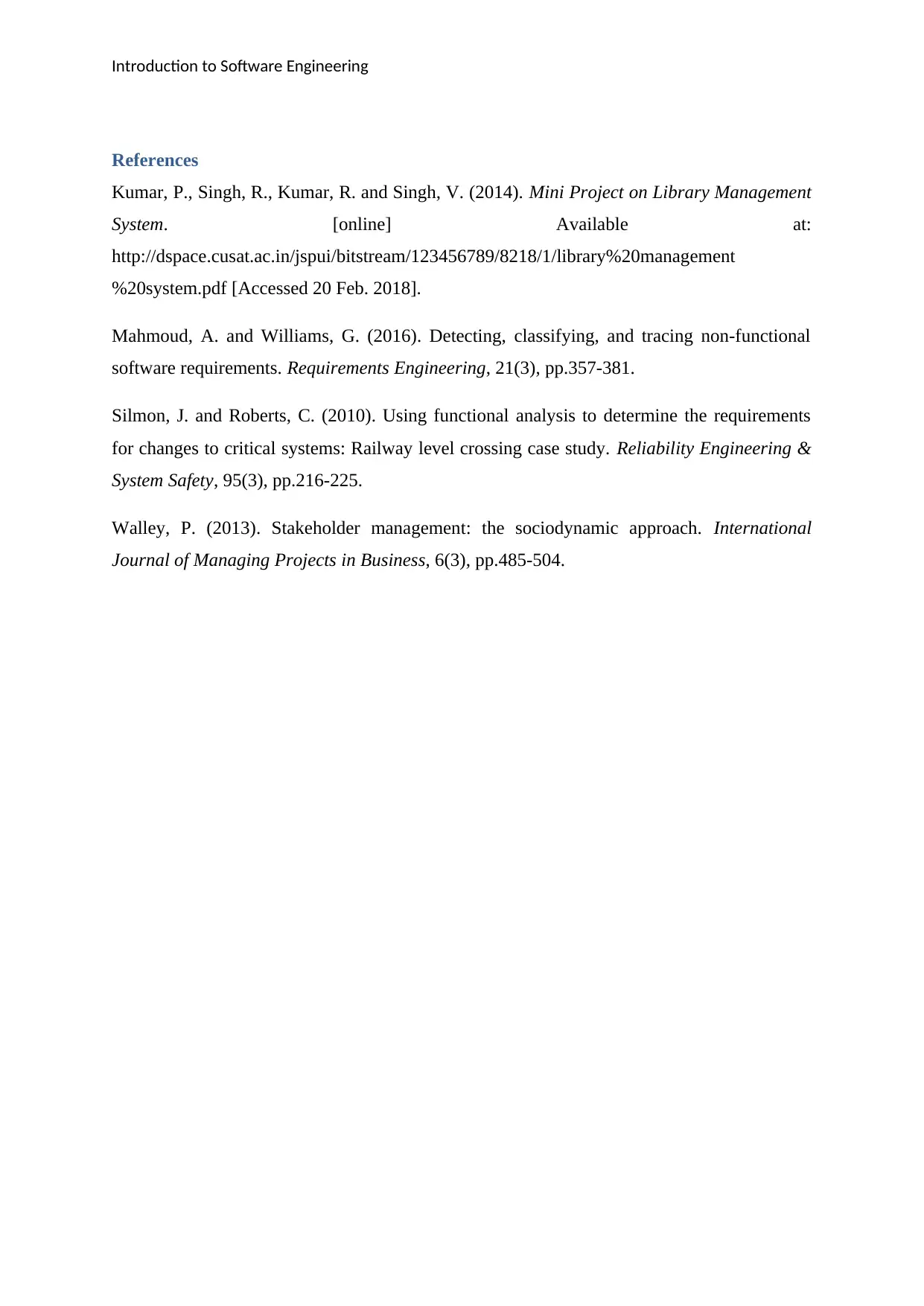Detailed Report on Functional and Non-Functional Requirements Analysis
VerifiedAdded on 2023/06/15
|5
|839
|54
Report
AI Summary
This software engineering report provides a detailed analysis of functional and non-functional requirements for a railway crossing system, including stakeholder identification and operational scenarios. Functional requirements encompass system login, user ID generation, signal transmission for bar operation, train status tracking, alert generation for schedule changes, downtime recording, communication with the Railway Control Centre (RCC), control of lights and bells, automated report generation, user account management, and incident reporting. Non-functional requirements emphasize system availability, performance, usability, reliability, maintainability, and security. The report also identifies key stakeholders such as library owners, managers, readers, suppliers, and operational staff, outlining scenarios like visitor registration, book borrowing and returns, overdue penalties, stock management, and reservation processes. Desklib offers this and many other solved assignments for students.
1 out of 5







![[object Object]](/_next/static/media/star-bottom.7253800d.svg)